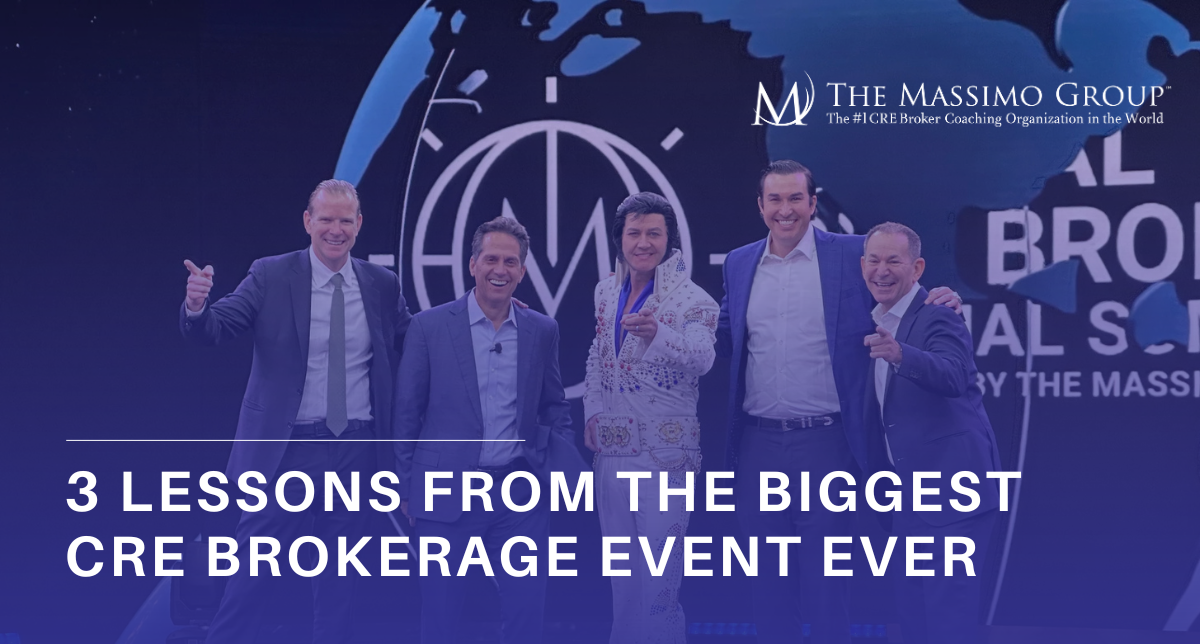
The 5 Directions Of A CRE Broker’s Prospect Call (And How to Handle Each One Like A Pro)
Last week’s newsletter was one of the most well-received we’ve ever sent.
This week, I want to reward action-takers with the next piece of the prospecting puzzle.
Because once you’ve nailed your opener, the next challenge is knowing where to go next.
(If you haven’t read last week’s newsletter, I would do so now.)
After reviewing thousands of prospecting calls with our coaching clients, we’ve found that every single call goes in one of five directions.
Five.
That’s it.
If you are familiar with the five directions and know how to navigate them, you’ll stop getting flustered and start controlling the conversation.
Direction #1: The Prospect Says “Yes”
This is, of course, what you want. It’s the simplest to navigate.
They agree to meet. You nailed the opening. You struck a nerve. Now’s your time to shine by doing the exact opposite of what most brokers do.
Don’t oversell. Don’t fill the silence. Don’t keep talking.
Book the meeting. Confirm the time. Then get off the phone.
Why? Your job in the prospect call is to move the conversation to the next step. Not to close the deal, not to present your whole pitch. That’s what the meeting is for.
And by respecting the boundary of the original ask (just like we talked about in the 27-second opener), you build trust.
Action Step:
The moment they say “Yes,” take control of scheduling. “Great. Let’s lock in a time. Does Tuesday or Thursday afternoon work best for you?” Be sure to send a calendar invite.
Direction #2: No
This one can sting.
While you may think they rejected you, in reality they simply rejected your request.. Maybe they already have representation. Maybe your timing’s off. Maybe you just didn’t hit the right value point.
Either way, this isn’t the end.
Most brokers move on too quickly here. But there’s an opportunity: ask for permission to send periodic market updates. Get them into your nurture pipeline.
And don’t treat this as a permanent “no.” Prospects who say no today often circle back when their current situation changes.
Action Step:
Respond with calm confidence. “Understand. Would it be alright if I sent you the occasional market update? My objective is to put you in position to make more educated decisions in the future.”
Direction #3: Not Interested
This is different from “no.”
When someone says “not interested,” it’s often a brush-off. But great brokers know that’s the moment to lean in with curiosity.
Try this:
“I hear that often when we call business owners like you and we haven’t established a relationship yet. But our clients are consistently saving 13% or more on their leases. May I ask, when might reducing rental costs become a priority for you?”
Or, for property owners:
“Many say the same, until they hear how nearby buildings are selling at historically high prices. May I ask, when might evaluating your property’s value be a priority for you?”
You’re not pushing. You’re planting seeds. And you’re standing firm in the value you bring.
Action Step:
Pre-script a line similar to the one above for your target audience. That way you’re not scrambling at the moment. Rehearse it. Own it.
Direction #4: Send More Info
This one’s a classic.
The prospect says, “Send me something.”
You say, “Sure.”
Then you hang up, send a generic brochure, and never hear from them again.
Here’s what to do instead:
First, qualify them. Ask: “Absolutely, can I ask what specific info would be most useful to you?” That gives you a read on their intent.
Then, make the info conditional.
Say: “Happy to send it over. All I ask is that we schedule a quick follow-up for next Tuesday, just to see if it made sense to explore further. That way we can both move forward with clarity, deal?”
This sets expectations, creates accountability, and gives you a legitimate reason to follow up.
If your prospect refuses to commit to a next step, you don’t have a qualified prospect, and you will end up chasing them for a response. Never chase.
Action Step:
Update your email templates to include this conditional language. No more sending info into a black hole.
Direction #5: Wrong Person
This one’s easy to dismiss, but don’t.
Even if they’re not the decision-maker, they can lead you to the right one.
Just be polite and direct:
“Thanks for letting me know, who would be the best person to speak with about this?”
In addition, be sure to share your value proposition with the “wrong person” either way. You never know who they are, what they are responsible for or who they now.
Action Step:
Create a simple spreadsheet to track “wrong person” redirects. Include name, title, phone, email, and referral source. Over time, this builds into a goldmine.
Every call will take one of these five paths.
The question is: do you know how to handle each one?
Top brokers don’t leave it to chance. They map it out, rehearse it, and show up prepared.
And when you treat prospecting like the science it is, you’ll start closing more meetings, building more relationships, and winning more business.
👉 Want help mapping your own prospecting strategy?
Book a free 30-minute Broker Break-Through Strategy Session.
We’ll walk through your scripts, your follow-ups, and your call map, so your next prospect call leads somewhere valuable.



